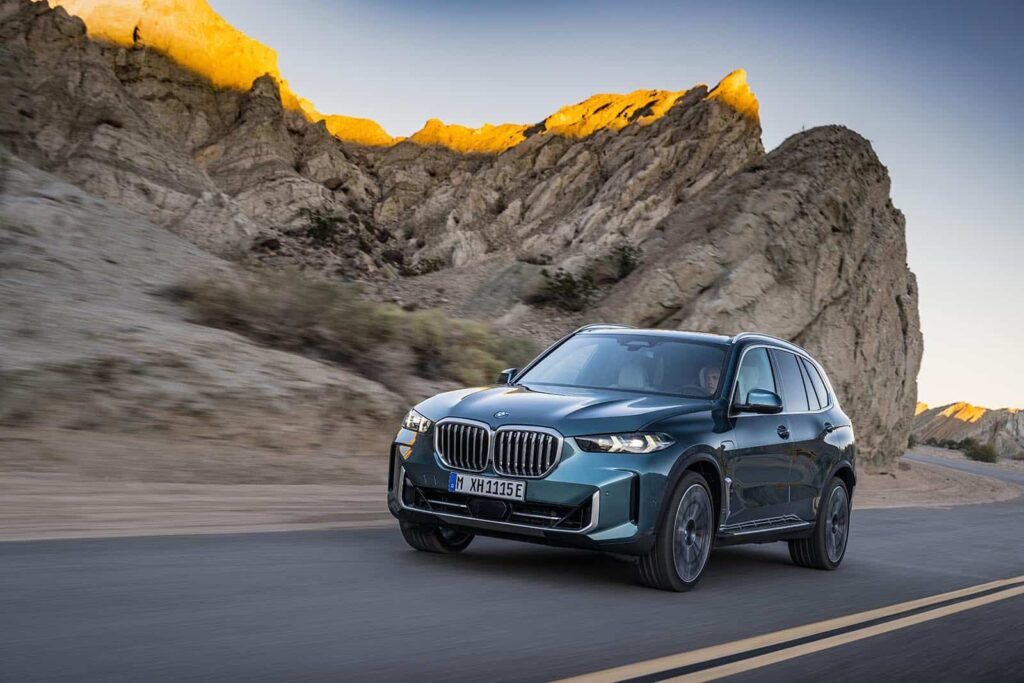
Buying a car should be an exciting journey, a moment of triumph as you drive off the lot in a gleaming new or used vehicle that promises freedom, reliability, and that irresistible new car smell. You’ve worked hard, saved diligently, and envisioned countless trouble-free miles stretching ahead. This initial automotive bliss, however, can sometimes crumble into a persistent nightmare, turning a significant financial investment into a source of relentless frustration and unforeseen expenses in just a short year.
Today, we’re pulling back the curtain on a harsh reality within the automotive world, shining a light on widespread patterns of disappointment that lead to profound buyer’s remorse for many vehicle owners. We’re not talking about isolated incidents or a single bad lemon; our insights are meticulously gathered from vast datasets, including rigorous Consumer Reports, the raw, honest feedback of thousands of real owners, and official industry recalls that consistently reveal systemic flaws. This isn’t just hearsay; this is data-driven, cold, hard truth, designed to arm you with the knowledge you need to avoid costly mistakes.
For anyone even contemplating a new or used vehicle purchase, understanding the pitfalls is paramount. We’re about to expose 15 specific vehicles that have consistently left their owners wishing they could hit the rewind button and choose something, anything, else. From notorious battery fires to catastrophic transmission failures and a host of other debilitating issues, these models represent a spectrum of automotive disappointments that have turned dreams into financial drains and daily commutes into exercises in frustration. Let’s dive into the first seven that have earned a notorious reputation for buyer’s remorse.
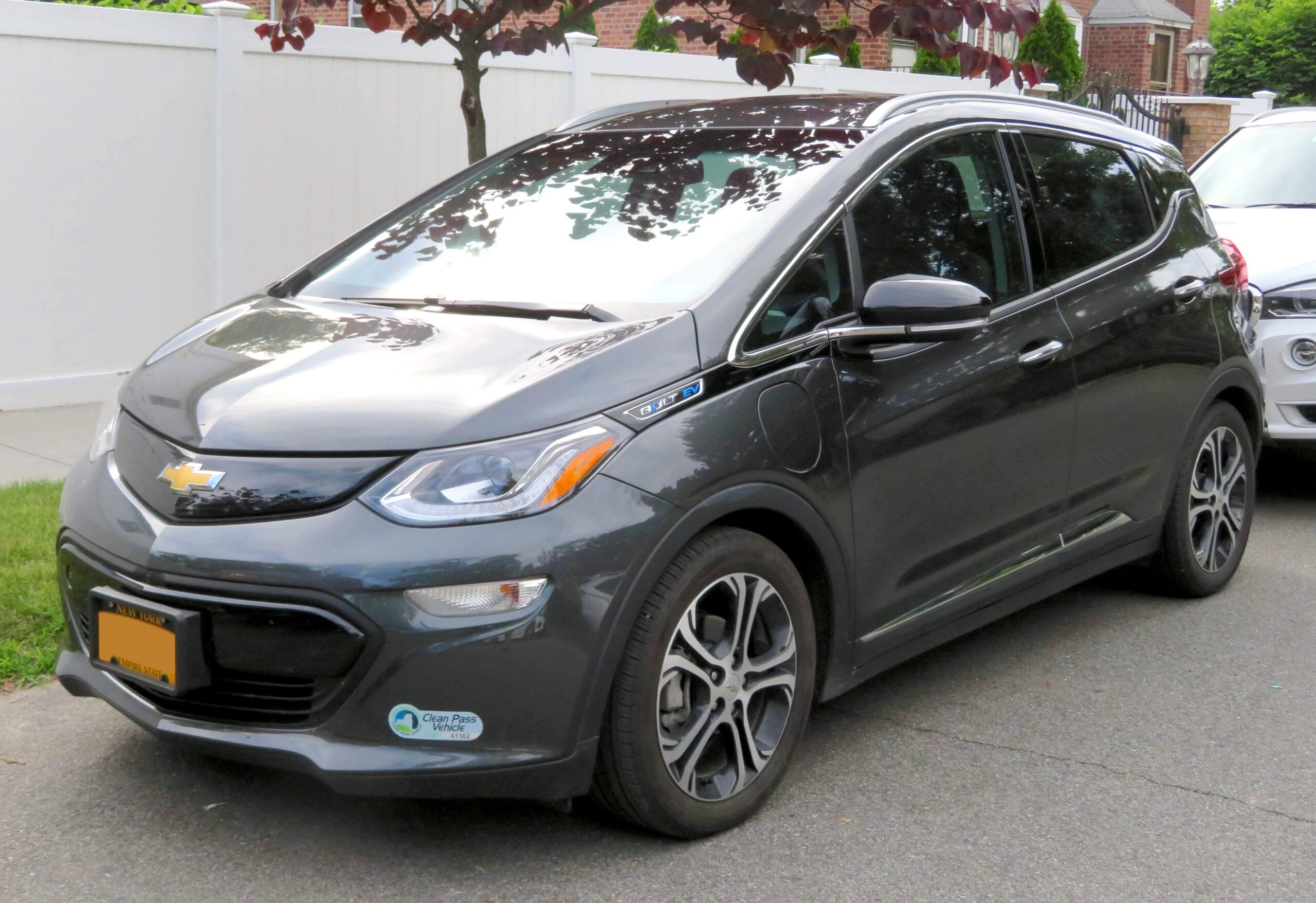
1. **Chevrolet Bolt**While General Motors’ Chevrolet Bolt initially garnered praise for its relative affordability and a respectable electric range, its journey has been tragically plagued with significant problems that have severely tarnished its appeal. The most infamous and alarming issue has been a series of battery-related fires, a critical safety concern that led to extensive and costly recalls in both 2020 and 2021. This fundamental flaw stemmed from lithium-ion batteries, specifically those manufactured by LG, which were found to be susceptible to short-circuiting, overheating, and ultimately igniting into flames.
These battery incidents created immense concern for owners and a substantial headache for the manufacturer, underscoring a deep-seated reliability problem at the core of the vehicle. The necessity of replacing entire battery packs on a large scale was a stark indicator of the severity of the defect, fundamentally undermining the trust owners placed in their electric vehicle. Such critical safety issues naturally lead to immense apprehension and regret for those who had invested in what they hoped would be a reliable, eco-friendly mode of transport.
Beyond the grave battery problems, the Chevrolet Bolt also falls short in several other crucial areas that contribute to owner dissatisfaction. Its ride quality is often described as merely “so-so,” failing to deliver the smooth and comfortable experience many drivers expect from a modern vehicle. Similarly, the space allocated for rear passengers is often considered inadequate, limiting its practicality for families or those frequently transporting multiple occupants. Coupled with uninspired handling, these factors collectively diminish the overall driving experience, further solidifying the Bolt’s place on many owners’ regret lists as a vehicle that simply didn’t live up to its initial promise.
Car Model Information: 2022 Chevrolet Bolt EUV FWD Premier
Name: Chevrolet Bolt EV
Caption: 2022 Chevrolet Bolt EV
Manufacturer: General Motors
Production: unbulleted list
ModelYears: unbulleted list
Class: unbulleted list
BodyStyle: unbulleted list
Layout: Front-engine, front-wheel-drive layout
Predecessor: Chevrolet Spark EV
Categories: 2020s cars, All Wikipedia articles in need of updating, All articles containing potentially dated statements, All articles to be merged, All articles with unsourced statements
Summary: The Chevrolet Bolt EV (marketed in Europe as Opel Ampera-e) is a battery electric subcompact hatchback manufactured and marketed by General Motors under its Chevrolet brand from late 2016 until late 2023, with a brief hiatus between mid-2021 and early 2022.
The first-generation Bolt was developed and manufactured with LG Corporation. Sales of the 2017 Bolt began in California in December 2016; it was released nationwide and international markets release in 2017. A rebadged European variant was marketed as the Opel Ampera-e in mainland Europe. In 2017, the Bolt was the second-best-selling plug-in car in the United States. It was named the 2017 Motor Trend Car of the Year, the 2017 North American Car of the Year, an Automobile magazine 2017 All Star, and was listed in Time magazine’s Best 25 Inventions of 2016. The Ampera-e was discontinued after 2018. By the end of 2020, GM had sold 112,000 Bolt and Ampera-e cars worldwide. The first-generation Bolt had been subject to at least three recalls due to battery fire risks.
In mid-2023, GM officials said they would discontinue the Bolt; after outcry, they announced plans for a next-generation model. The second-generation Bolt, based on the Chevrolet Bolt EUV, was unveiled on October 9, 2025 for model year 2027.
Get more information about: Chevrolet Bolt
Buying a high-performing used car >>>
Brand: Chevrolet Model: Bolt
Price: $21,999 Mileage: 23,596 mi.
Read more about: Beyond the Beta Label: Unpacking the Genuine Confusion and Critical Failures in Automotive Software-Defined Vehicles
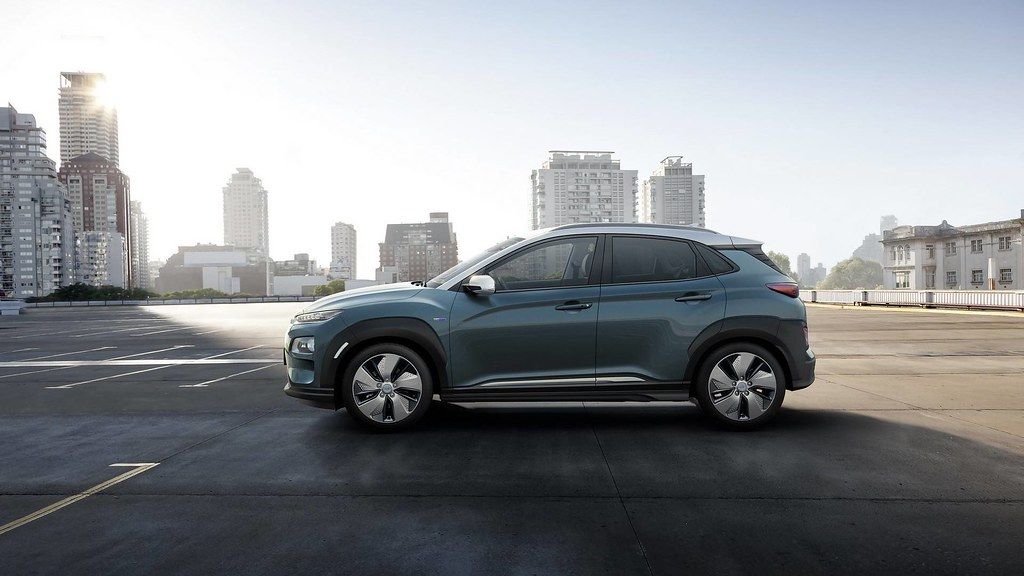
2. **Hyundai Kona Electric**Hyundai has certainly made significant strides and earned considerable acclaim with many of its electric vehicle offerings, showcasing innovation and thoughtful design. However, even successful manufacturers can have their missteps, and the Hyundai Kona Electric stands out as a regrettable exception, quickly becoming a prime example of a “clunker” within their lineup. Much like its counterpart, the Chevrolet Bolt, the Kona Electric has an unfortunate history of severe battery fires and subsequent recalls that have deeply impacted owner confidence and safety.
These critical battery-related incidents prompted Hyundai to issue widespread global recalls in both 2020 and 2021, an urgent measure intended to mitigate the significant fire risks associated with the vehicle’s power source. The comprehensive solution involved the extensive and costly replacement of battery packs in all affected EVs, a clear indication of a systemic and dangerous flaw. For owners, this meant not only the inconvenience of recall procedures but also the persistent worry about the safety and reliability of their vehicle, a profound source of buyer’s remorse that no driver should have to endure.
Unfortunately, the battery problems, while severe, proved to be just “the tip of the iceberg” when it came to the Hyundai Kona Electric’s drawbacks. The underlying issues extended beyond the powertrain, contributing to an overall ownership experience that left many feeling profoundly disappointed. The phrase “buyer beware!” served as a stark warning, encapsulating the sentiment of many who realized too late that this particular EV carried a host of hidden problems that undermined its initial appeal and left them with a purchase they wished they could undo.
Car Model Information: 2024 Hyundai KONA EV Limited
Name: Hyundai Kona
Caption: Hyundai Kona N Line (SX2)
Manufacturer: Hyundai Motor Company
Aka: Hyundai Kauai (Portugal)
Production: 2017–present
ModelYears: 2018–present
Class: Subcompact crossover SUV
BodyStyle: SUV
Layout: ubl
Categories: 2020s cars, All-wheel-drive vehicles, All Wikipedia articles in need of updating, All Wikipedia articles written in British English, Articles containing Chinese-language text
Summary: The Hyundai Kona is a subcompact crossover SUV produced by the South Korean manufacturer Hyundai. The first-generation Kona debuted in June 2017 and the production version was revealed later that year. It is positioned between the Venue or Bayon and the Tucson in Hyundai crossover SUV line-up. The battery electric version called the Kona Electric (or Kona EV) was first launched in South Korea during the first half of 2018 and rolled out gradually worldwide afterwards.
Get more information about: Hyundai Kona
Buying a high-performing used car >>>
Brand: Hyundai Model: Kona
Price: $28,884 Mileage: 9,293 mi.
Read more about: Hyundai-Kia Crisis: Towing Hitch Fire Risk Threatens Telluride and Palisade SUVs
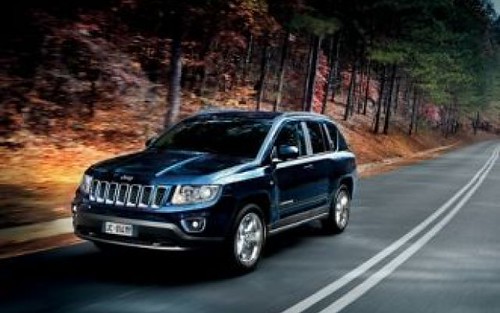
3. **Jeep Compass**Marketed as a compact SUV with the rugged spirit of the Jeep brand, the Jeep Compass has, across various model years, developed a notorious reputation for serious reliability issues that transform it from an adventure vehicle into a source of continuous headaches. For anyone seeking a trouble-free driving experience, the advice from countless frustrated owners is clear: “steer clear of this SUV” if you wish to avoid what many describe as a “migraine headache on wheels.” The consistent stream of mechanical failures turns the dream of Jeep ownership into a frustrating reality of constant repairs and unexpected costs.
One of the most frequent and aggravating complaints from owners centers around the vehicle’s transmissions, specifically both the continuously variable transmission (CVT) and the 9-speed automatic transmissions. These critical components are prone to experiencing “herky-jerky shifting,” creating an uncomfortable and unpredictable driving experience, and, more alarmingly, are susceptible to “catastrophic failure” that can leave drivers stranded. The expense of repairing or replacing such integral parts is substantial, representing a significant financial blow that many owners simply do not anticipate when purchasing a seemingly robust SUV.
Beyond these prevalent transmission issues, the Jeep Compass is also plagued by a myriad of other performance and reliability shortcomings. Owners frequently report “poor engine performance,” leading to a sluggish and uninspiring drive that belies its SUV status. Additionally, problems with “excessive oil consumption” emerge as a recurring theme, requiring frequent monitoring and top-offs, while persistent “electrical system issues” can affect everything from dashboard functionalities to critical safety features. These cumulative flaws relentlessly chip away at the value and enjoyment of the vehicle, making the Jeep Compass a purchase many owners deeply regret.
Car Model Information: 2020 Jeep Cherokee Latitude Plus
Name: Jeep Compass
Caption: 2019 Jeep Compass
Manufacturer: Jeep
Production: 2006–present
ModelYears: 2007–present
Class: Compact crossover SUV
BodyStyle: SUV
Layout: Front-engine, front-wheel-drive layout
Chassis: Unibody
Categories: 2010s cars, 2020s cars, All-wheel-drive vehicles, All Wikipedia articles written in American English, Articles with short description
Summary: The Jeep Compass is a compact crossover SUV, introduced in 2006 for the 2007 model year. The first generation Compass and Patriot, its rebadged variant, were among Jeep’s first crossover SUVs. The second-generation Compass debuted in September 2016 in Brazil and at the Los Angeles International Auto Show in November 2016, sharing a modified platform with the Renegade. It is positioned between the smaller Renegade and the larger Cherokee globally or the Commander in South America. The third-generation Compass debuted in May 2025, built on the STLA Medium by Stellantis, shared with other PSA Groupe vehicles.
Get more information about: Jeep Compass
Buying a high-performing used car >>>
Brand: Jeep Model: Compass
Price: $15,877 Mileage: 96,780 mi.
Read more about: Buyer Beware: These 10 Popular Cars Are Known Money Pits After 100,000 Miles, According to Automotive Experts
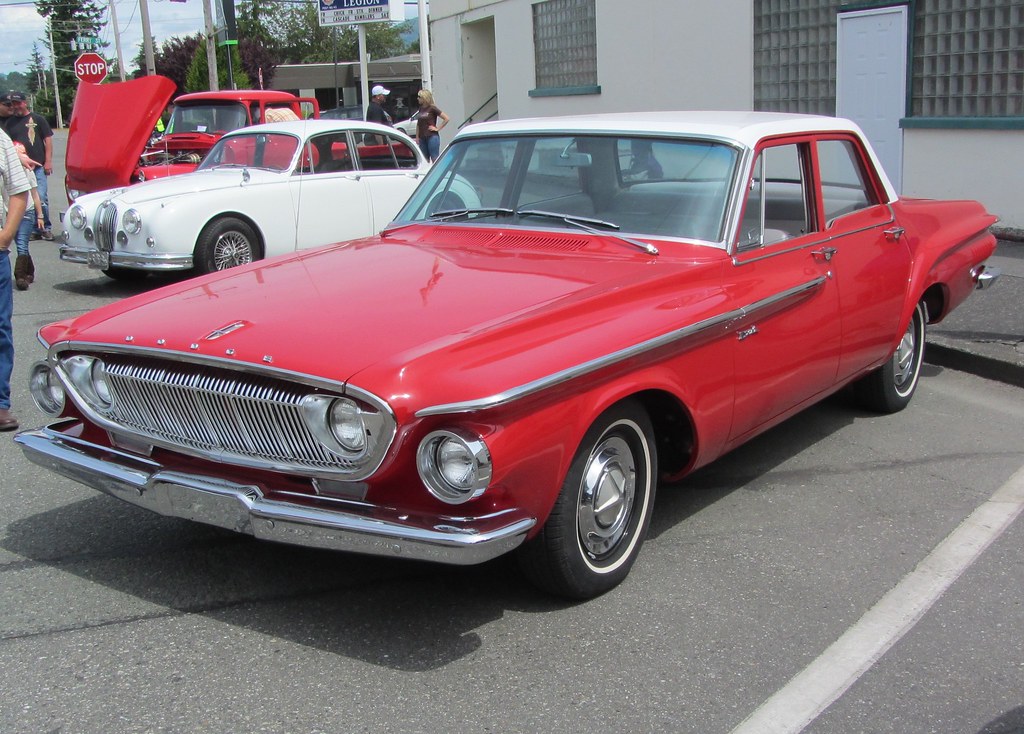
4. **Dodge Dart**The Dodge Dart, introduced as a compact sedan, quickly earned a reputation for having “full-size car problems,” a stark contradiction to its smaller stature and intended market position. For many owners, the question isn’t where the problems begin, but rather where they end, as the vehicle seems to be riddled with issues across virtually all its major systems. This pervasive unreliability has cemented the Dodge Dart’s status as a car that a significant number of buyers wish they had simply never purchased, leading to profound and widespread buyer’s remorse.
The litany of complaints spans the entirety of the vehicle, affecting critical components from the powertrain to the chassis. Owners report severe and frequent issues with the transmission, which can manifest as rough shifts, hesitations, or even complete failures that necessitate costly repairs. The engine itself is another source of frustration, often struggling with performance issues or exhibiting unexpected malfunctions that compromise its reliability. These fundamental mechanical shortcomings are consistently cited as major reasons for owner dissatisfaction, turning daily driving into a perpetual gamble.
Furthermore, the problems extend to the vehicle’s underpinnings, with widespread complaints regarding the suspension system, which can lead to a harsh and uncomfortable ride, and the braking system, which may not inspire confidence. The cumulative effect of these widespread issues is clearly reflected in owner satisfaction surveys. According to data compiled by Consumer Reports, a sobering statistic reveals that “around six in 10 buyers say they are not satisfied with the vehicle.” This overwhelmingly negative feedback underscores the Dodge Dart’s place as a truly regrettable automotive investment for a significant majority of its owners.
Car Model Information: 2015 Dodge Dart SXT
Name: Dodge Dart
Caption: 1966 Dodge Dart GT 2-door hardtop
Manufacturer: Dodge
Production: 1959–1976 (US market)
ModelYears: 1960–1976 (US market)
Class: Full-size
Layout: FR layout
Predecessor: Dodge Coronet#Fourth generation (1957–1959)
Related: Plymouth Valiant,Chrysler Valiant,Dodge Phoenix
Successor: Dodge Aspen,Dodge Diplomat,Talbot Tagora
Categories: 1970s cars, All articles with unsourced statements, Articles with short description, Articles with unsourced statements from December 2023, Articles with unsourced statements from May 2025
Summary: The Dodge Dart is a line of passenger cars produced by Dodge from the 1959 to 1976 model years in North America, with production extended to later years in various other markets.
The production Dodge Dart was introduced as a lower-priced full-size model in 1960 and 1961, but became a mid-size car for one model year for 1962, and was then reduced to a compact for two generations, from 1963 to 1976.
Chrysler had first used ‘Dart’ name plates on two Italian styled show cars, in 1956 and 1957, before it became a Dodge model name. The Dart nameplate was resurrected for a Fiat-derived compact car that was introduced in 2012.
Get more information about: Dodge Dart
Buying a high-performing used car >>>
Brand: Dodge Model: Dart
Price: $9,995 Mileage: 143,082 mi.
Read more about: 15 Vehicles Millennials Are Steering Clear Of: Unpacking the Generational Divide in Automotive Appreciation
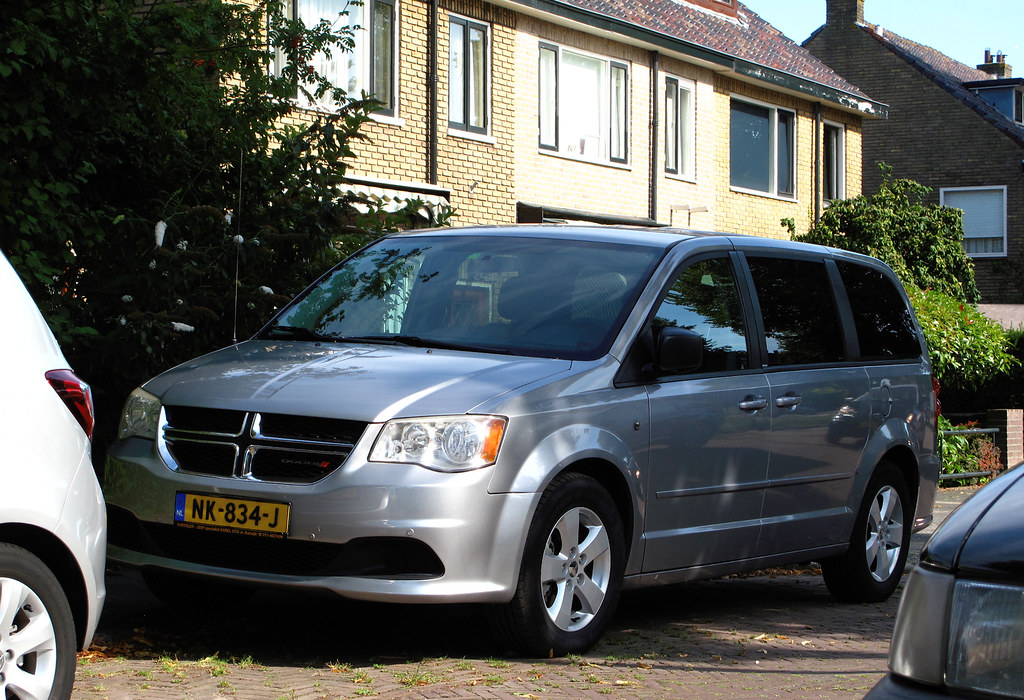
5. **Dodge Grand Caravan**For many families across generations, the Dodge Grand Caravan holds a unique place in their memories, serving as a quintessential family hauler for countless road trips and daily errands. While some of these memories might be fond, for a significant number of owners, the reality of driving a Grand Caravan has been anything but smooth, often turning into a saga of mechanical frustrations. This minivan, despite its spacious utility, has consistently proved to be an unreliable workhorse, particularly when it comes to its most crucial mechanical systems.
Central to the widespread owner dissatisfaction is the pervasive issue of transmission failure, a common complaint that severely undermines the vehicle’s dependability as a primary mode of transport for families, pets, and cargo. Before these transmissions ultimately “go kaput,” owners frequently experience a frustrating array of precursor problems. These include “delayed gear engagement,” where the vehicle hesitates to respond, “rough shifting,” which makes for an uncomfortable and unsettling ride, and alarming instances of the transmission “slipping,” which poses both a performance and safety concern.
In addition to these critical transmission woes, the Dodge Grand Caravan also suffers from a variety of other reliability issues that contribute to its regrettable ownership experience. Many owners consistently report persistent “electrical system problems,” which can affect anything from power features to critical dashboard functions, adding another layer of unpredictable malfunctions. Furthermore, the issue of “heavy oil consumption” is a recurring grievance, requiring constant monitoring and frequent top-offs that add to the maintenance burden. The collective sentiment among these owners is clear: if they could “rewind time and have a do-over,” they would unequivocally choose something else, making the Grand Caravan a minivan many wish they had never purchased.
Car Model Information: 2020 Lexus RX 350 Base
Caption: 2011 Dodge Grand Caravan Mainstreet
Name: Dodge Grand Caravan
Manufacturer: Chrysler Corporation,Daimler AG,Chrysler LLC,Chrysler Group LLC,FCA US LLC
Class: Minivan
Layout: FF layout,F4 layout
Production: November 2, 1983 –August 21, 2020
ModelYears: 1984–2020
Related: Plymouth Voyager,Chrysler Town & Country (minivan),Dodge Mini Ram,Chrysler Voyager,Volkswagen Routan
Assembly: Windsor, Ontario,Fenton, Missouri,Fenton, Missouri,Fuzhou
Successor: Dodge Journey,Chrysler Voyager
Categories: All-wheel-drive vehicles, All articles with unsourced statements, Articles with short description, Articles with unsourced statements from December 2017, Articles with unsourced statements from May 2009
Summary: The Dodge Caravan is a series of minivans manufactured by Chrysler from the 1984 through 2020 model years. The Dodge version of the Chrysler minivans, was marketed as both a passenger van and a cargo van (the only version of the model line offered in the latter configuration). For 1987, the model line was joined by the long-wheelbase Dodge Grand Caravan. Produced in five generations across 36 model years, the Dodge Caravan is the second longest-lived Dodge nameplate (exceeded only by the Dodge Charger). Initially marketed as the Dodge counterpart of the Plymouth Voyager, the Caravan was later slotted between the Voyager and the Chrysler Town & Country. Following the demise of Plymouth, the model line became the lowest-price Chrysler minivan, ultimately slotted below the Chrysler Pacifica.
Sold primarily in the United States and Canada, the Dodge Caravan was also marketed in Europe and other international markets under the Chrysler brand (as the Chrysler Voyager or Chrysler Caravan). From 2008 onward, Dodge marketed the model line only as the Grand Caravan; Ram Trucks sold a cargo-only version of the model line as the Ram C/V Tradesman. The model line was also rebranded as the Volkswagen Routan from 2009 through 2014.
After the 2020 model year, the Dodge Grand Caravan was discontinued, ending production on August 21, 2020. For 2021 production, the Grand Caravan nameplate was moved to Chrysler, which used it for a Canadian-market version of the Chrysler Pacifica (in the United States, the exact vehicle was marketed as the Chrysler Voyager).
For its entire production run, the Dodge Caravan/Grand Caravan was manufactured by Chrysler Canada (now Stellantis Canada) at its Windsor Assembly facility (Windsor, Ontario). From 1987 until 2007, the model line was also manufactured by Chrysler at its Saint Louis Assembly facility (Fenton, Missouri). Since their introduction in late 1983, over 14.6 million Chrysler minivans have been sold worldwide (including export versions and versions sold through rebranding).
Get more information about: Dodge Caravan
Buying a high-performing used car >>>
Brand: Dodge Model: Grand Caravan
Price: $30,981 Mileage: 81,179 mi.
Read more about: Bypass These 6 Compacts: They Become Headaches for Any Mechanic After You Hit Triple Digits
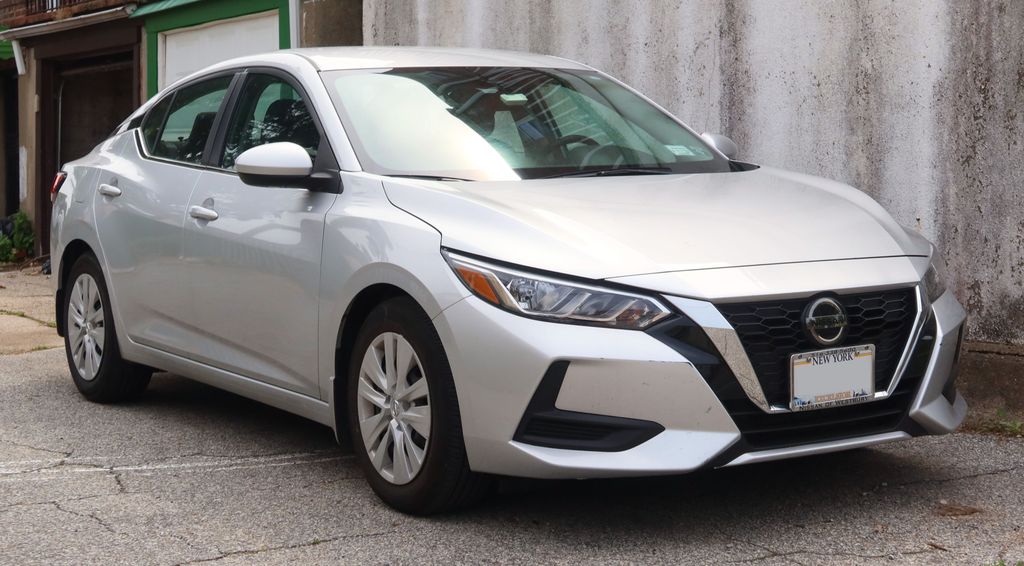
6. **Nissan Sentra**While virtually every vehicle model has its standout years and its less stellar ones, certain model years of the Nissan Sentra have earned a particularly horrific reputation among owners, solidifying their place on lists of regretted purchases. For anyone considering this compact sedan, the explicit advice is to “stay away from the ones made from 2013 to 2019,” as these particular iterations are infamous for a specific and highly problematic component that has been a relentless “thorn in the side of many Sentra owners.”
The primary culprit behind this widespread dissatisfaction is the continuously variable transmission (CVT), a technology that, in these specific model years, proved to be fundamentally flawed and incredibly frustrating. Owners of these Sentras frequently reported a litany of CVT-related problems, including consistent “overheating” issues that could lead to breakdowns, “jerky acceleration” that made for an uncomfortable and unpredictable driving experience, and disturbing “shuddering” during operation. These transmission failures were not isolated incidents but rather a systemic defect that severely compromised the vehicle’s reliability and driving pleasure.
Adding to the extensive list of issues, engine stalling was another prominent and dangerous problem reported by numerous owners, further highlighting the unreliable nature of these Sentra models. Beyond these mechanical woes, the vehicle was also subject to a multitude of recalls related to critical safety components. These included problems with the vehicle’s airbags, seatbelts, and brakes, among others, underscoring a broader pattern of manufacturing and design flaws. The cumulative effect of these persistent and diverse problems made the 2013-2019 Nissan Sentras a source of deep regret and continuous expense for those who bought them.
Car Model Information: 2023 Nissan Sentra SV
Name: Nissan Sentra
Caption: 2021 Nissan Sentra SR (B18; Canada)
Manufacturer: Nissan
Aka: Nissan Sunny
Production: 1982–present
Class: Subcompact car
Predecessor: Nissan Sunny#B310
Categories: 1990s cars, 2000s cars, 2010s cars, 2020s cars, All Wikipedia articles written in American English
Summary: The Nissan Sentra is a series of automobiles manufactured by the Japanese automaker Nissan since 1982. Since 1999, the Sentra has been categorized as a compact car, while previously it occupied the subcompact class. Until 2006, Sentra was a rebadged export version of the Japanese Nissan Sunny, but since the 2013 model year, Sentra is a rebadged export version of the Sylphy. The Sentra nameplate is not used in Japan. Many other countries in Latin America sell their versions of the Sunny as the Sentra. In Mexico, the first three generations of the Sentra were known as the Nissan Tsuru (Japanese for crane), and the B13 model was sold under that name until 2017, alongside the updated models badged as Sentra.
In North America, the Sentra currently serves as Nissan’s compact car, despite being rated as a mid-size car by the EPA due to its interior volume since the 2007 model year. While previous Sentras were subcompacts, the Sentra has grown over the years, with the Nissan Versa having replaced the Sentra in the entry-level area.
The Sentra name was created for Nissan by Ira Bachrach of NameLab, and Bachrach describes the origin as “Nissan wanted consumers to understand that it was quite safe even though it was small. The word Sentra sounds like central as well as sentry, which evokes images of safety.”
Get more information about: Nissan Sentra
Buying a high-performing used car >>>
Brand: Nissan Model: Sentra
Price: $19,490 Mileage: 41,832 mi.
Read more about: Buyer Beware: These 10 Popular Cars Are Known Money Pits After 100,000 Miles, According to Automotive Experts
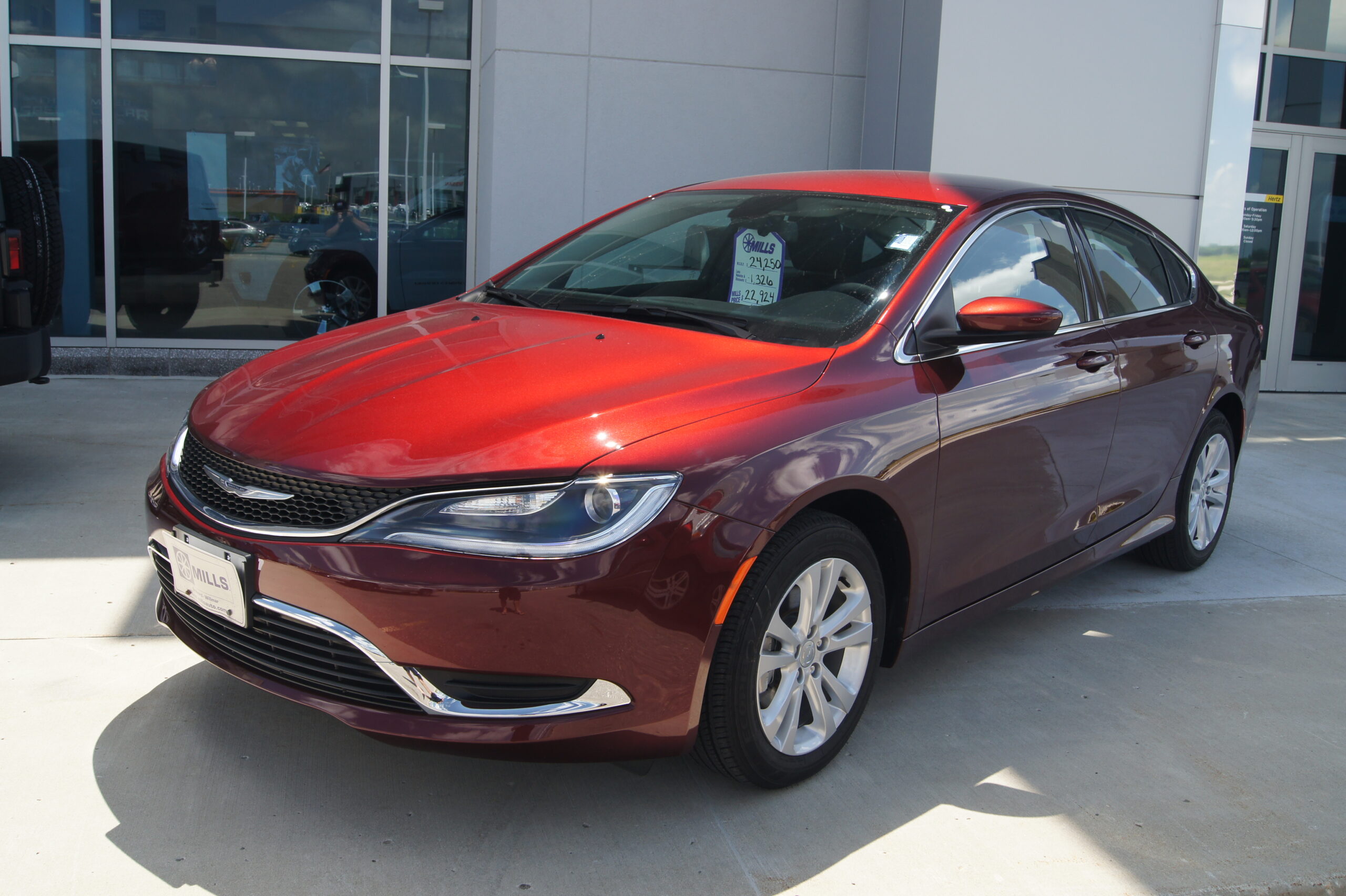
7. **Chrysler 200**Manufactured between 2011 and 2017, the Chrysler 200 quickly distinguished itself for all the wrong reasons, accumulating a substantial number of reliability issues that have made it a consistent feature on lists of vehicles owners wish they had never purchased. This compact sedan, intended to compete in a crowded market, instead delivered an ownership experience fraught with mechanical problems, particularly concerning its transmission, which became a significant source of frustration and financial burden.
Owners of the 2015, 2016, and 2017 models, in particular, found the “9-speed automatic tranny to be especially problematic.” This specific transmission design was notorious for its inconsistencies, leading to unpredictable shifting, hesitations, and a general lack of refinement that detracted significantly from the driving experience. More alarmingly, these issues were not merely minor annoyances; “transmission failure was a thing, too,” meaning that many owners faced the daunting and expensive prospect of needing major repairs or even complete transmission replacements well before the expected lifespan of such a critical component.
As if the pervasive transmission problems weren’t enough, the Chrysler 200 also suffered from a range of “engine performance problems.” These could manifest as sluggish acceleration, unexpected power losses, or other operational issues that further undermined the vehicle’s overall reliability and owner satisfaction. The combination of these critical powertrain defects meant that the Chrysler 200, despite its attempts at modern styling and features, ultimately delivered an experience marred by breakdowns and costly fixes, making it a clear case of buyer’s remorse for a significant portion of its owners.
Navigating the complexities of vehicle ownership can often feel like a minefield, with unforeseen issues lurking beneath a glossy exterior. While the first seven entries on our list revealed widespread and systemic problems across various segments, our journey through automotive disappointments continues. Now, we turn our expert gaze to eight more vehicles that have consistently left their owners wishing they had chosen a different path, models that prove that even with thorough research, some purchases can still lead to a profound sense of regret.
These vehicles, much like their predecessors on this list, represent a spectrum of design shortcomings, recurring mechanical woes, and the substantial financial costs incurred by unsuspecting owners. From notorious transmission failures to persistent engine troubles and a host of electrical gremlins, these examples underscore the importance of looking beyond initial impressions and diving deep into real-world ownership experiences. Let’s delve into the next wave of vehicles that have earned their place on our list of automotive regrets.
Car Model Information: 2017 Chrysler 200 LX
Name: Chrysler 200
Manufacturer: Chrysler
Production: 2010–2016
ModelYears: 2011–2017
Assembly: Sterling Heights, Michigan
Class: Mid-size car
Sp: us
Predecessor: Chrysler Sebring
Categories: 2010s cars, All articles with dead external links, All articles with unsourced statements, Articles with dead external links from July 2020, Articles with permanently dead external links
Summary: The Chrysler 200 is a mid-size sedan that was manufactured and marketed by Chrysler from model years 2011 to 2017 across two generations in four-door sedan and two-door convertible (first generation only) body styles.
The 200 nameplate debuted on the 200C, a prototype hybrid vehicle shown at the 2009 North American International Auto Show in Detroit and based on the Chrysler 300. The 200C concept was engineered to accept either traditional gasoline, hybrid or full-electric powertrains.
Get more information about: Chrysler 200
Buying a high-performing used car >>>
Brand: Chrysler Model: 200
Price: $11,988 Mileage: 91,194 mi.
Read more about: Bawse-Level Bling: The 10 Most Shocking Custom Paint Jobs in Rick Ross’s Legendary Car Collection

8. **Nissan Altima**The Nissan Altima, a perennial presence on American roads, might seem like a safe and sensible choice for a mid-size sedan. However, for a disheartening number of owners, this popular vehicle has become a source of significant buyer’s remorse, particularly concerning its transmission. The continuously variable transmission (CVT) that Nissan heavily integrated into its lineup proved to be a critical flaw for many Altima models, with the worst of these issues surfacing prominently in the 2013 to 2019 model years.
Owners from this period frequently reported a frustrating array of problems with their CVTs, including a lack of responsiveness, unsettling shuddering during acceleration, and, in severe cases, outright transmission failure. These aren’t minor inconveniences but fundamental issues that compromise the vehicle’s driveability and long-term reliability. The financial burden of addressing these complex transmission repairs can be staggering, often overshadowing any initial savings gained from the Altima’s competitive pricing.
Beyond the well-documented CVT woes, the Nissan Altima also presented owners with other exasperating problems that chipped away at their satisfaction. Reports of steering issues, which could range from vague road feel to outright malfunctions, contributed to a less-than-ideal driving experience. Furthermore, many owners battled excessive oil consumption and persistent oil leaks, issues that demand frequent monitoring and costly fixes, collectively solidifying the Altima’s regrettable reputation among its more unfortunate owners.
Car Model Information: 2023 Nissan Altima 2.5 SV
Name: Nissan Altima
Caption: 2024 Nissan Altima SR (L34; US)
Manufacturer: Nissan
Aka: Nissan Bluebird
Production: 1992–present
Class: Compact car
Predecessor: Nissan Bluebird,Nissan Stanza
ModelYears: 1993–present
Categories: 2000s cars, 2010s cars, 2020s cars, All-wheel-drive vehicles, All Wikipedia articles written in American English
Summary: The Nissan Altima is a mid-size car manufactured by Nissan since 1992. It is a continuation of the Nissan Bluebird line, which began in 1955.
The Altima has historically been larger, more powerful, and more luxurious than the Nissan Sentra but less so than the Nissan Maxima. The first through fourth-generation cars were manufactured exclusively in the United States and officially sold in North and South America, along with the Middle East and Australia. For other markets, Nissan sold a related mid-size sedan called the Nissan Teana which was between the Altima and Maxima in terms of size. In 2013, the Teana became a rebadged version of the fifth-generation Altima.
The name “Altima” was originally applied to a top trim line of the Nissan Leopard for the Japanese market in 1986, and then to the Nissan Laurel Altima mid-size car sold in Central America and the Caribbean before 1992. In 1992, Nissan discontinued the Stanza which was a Nissan Bluebird clone, replacing it with the US-built Altima, while remaining a compact car. The first Altima was produced in June 1992, as a 1993 model. All Altima models for the North American market were built in Smyrna, Tennessee, until June 2004, when Nissan’s Canton, Mississippi plant also began producing the model to meet high demand.
Get more information about: Nissan Altima
Buying a high-performing used car >>>
Brand: Nissan Model: Altima
Price: $19,490 Mileage: 52,569 mi.
Read more about: Buyer Beware: These 10 Popular Cars Are Known Money Pits After 100,000 Miles, According to Automotive Experts
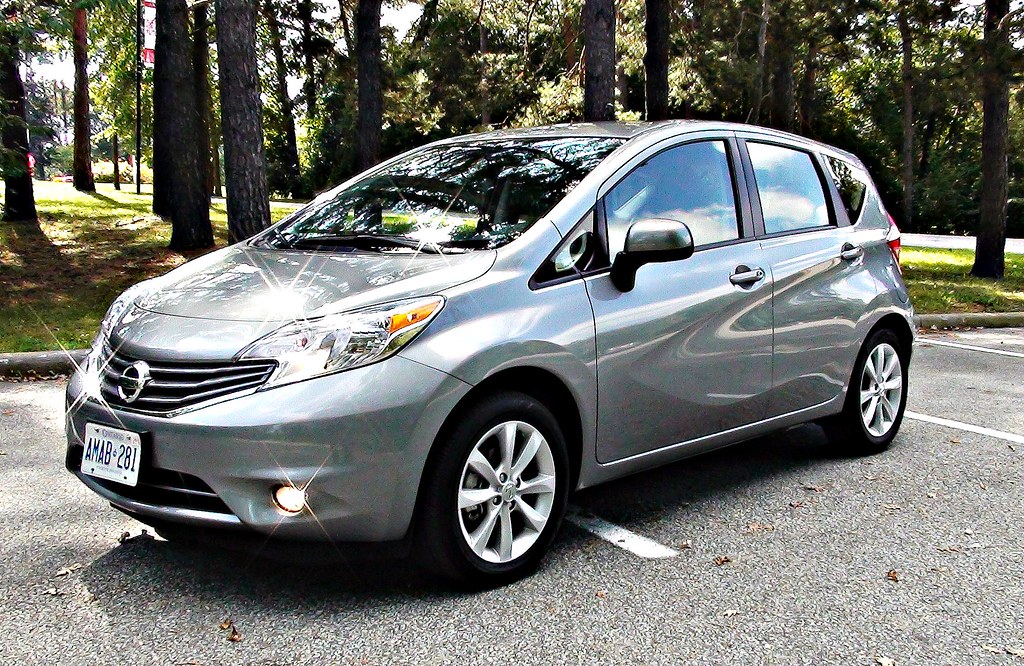
9. **Nissan Versa Note**Positioned as an incredibly affordable small hatchback, the Nissan Versa Note initially attracts buyers seeking maximum utility for minimal outlay. Yet, this aggressive pricing often serves as a stark reflection of its underlying quality, a reality that many owners discovered too late. What begins as an economical choice frequently devolves into a parade of mechanical frustrations, turning what should be a convenient city car into a significant source of disappointment and regret.
At the core of the Versa Note’s widespread owner dissatisfaction lies its transmission, another instance of Nissan’s problematic continuously variable transmission (CVT). This component proved to be an endless source of frustration, manifesting in issues such as sluggish performance, unresponsive acceleration, and a general lack of refinement that made daily driving a chore. The constant worry of potential transmission failure and the associated repair costs weighed heavily on owners, undermining the very notion of an “affordable” vehicle.
Compounding these transmission woes, the Nissan Versa Note suffered from an anemic acceleration provided by its 1.6-liter 4-cylinder engine. This lack of power made merging onto highways or executing overtakes a nerve-wracking experience, further detracting from the driving enjoyment. For a vehicle marketed on practicality and value, the combination of transmission issues and underpowered performance created an ownership experience that left many feeling that their initial savings were quickly eroded by frustration and the desire for a more capable, reliable vehicle.
Read more about: Buyer Beware: These 10 Popular Cars Are Known Money Pits After 100,000 Miles, According to Automotive Experts
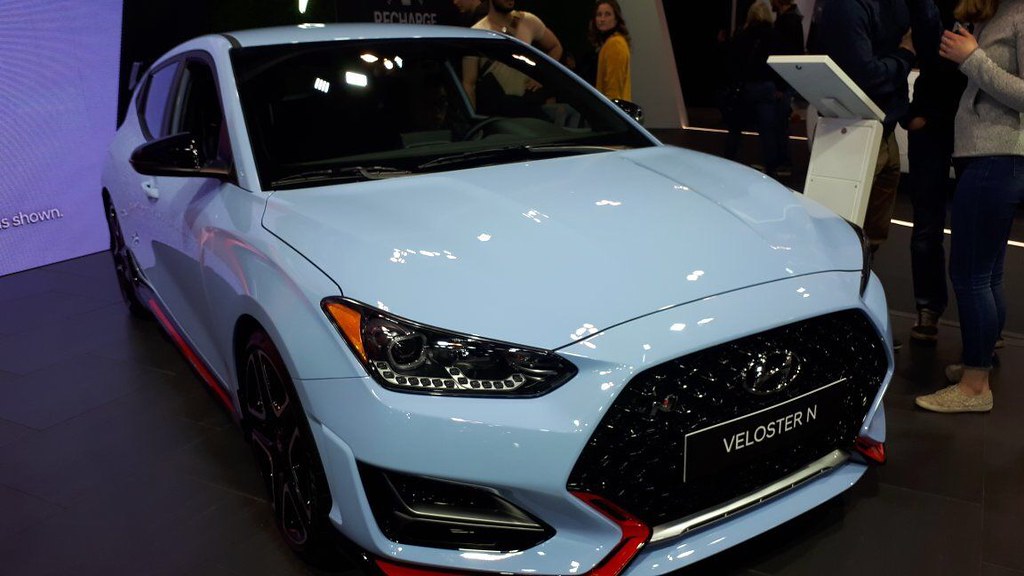
10. **Hyundai Veloster**The Hyundai Veloster stands out from the crowd with its distinctive styling, unique three-door configuration, and a reputation for responsive handling that appeals to drivers seeking something a little different. Its cool-looking aesthetic and sporty demeanor promised an engaging driving experience, initially drawing in a niche market of enthusiasts. However, beneath this appealing façade, the Veloster concealed a series of significant problems that owners found increasingly hard to ignore, fundamentally eroding its appeal.
One of the most alarming issues that plagued the Hyundai Veloster involved its engine, with numerous reports indicating problems that could, in severe cases, lead to catastrophic failure. Such a critical flaw not only represents a massive financial burden for owners but also raises serious safety concerns, transforming the thrill of driving into a constant source of anxiety. The specter of a major engine breakdown deeply compromised the trust owners placed in their seemingly dynamic vehicle.
Adding to these powertrain woes, the Veloster’s dual-clutch transmission also presented a frustrating array of malfunctions. Owners frequently experienced issues such as delayed acceleration, an unsettling sensation of slipping gears, and jerky shifts that marred the otherwise responsive handling. These transmission anomalies created an inconsistent and often uncomfortable driving experience, further detracting from the vehicle’s sporty promise and demanding costly diagnostic and repair work.
As if engine and transmission issues weren’t enough, the Hyundai Veloster also suffered from recurring suspension and steering problems. These issues could manifest as premature wear, leading to a harsh ride quality, or a degradation in steering precision, undermining the very “responsive handling” that was one of its initial selling points. The cumulative effect of these widespread mechanical and structural defects ultimately led many Veloster owners to regret their purchase, realizing that distinctive style came at a steep, unpredictable price.
Car Model Information: 2013 Hyundai Veloster Base
Name: Hyundai Veloster
Manufacturer: Hyundai Motor Company
Production: 2011–2022
Class: Sport compact car
Layout: Front-engine, front-wheel-drive layout
BodyStyle: hatchback
Predecessor: Hyundai Tiburon
ModelYears: 2012–2022
Assembly: Ulsan
Categories: All Wikipedia articles in need of updating, All articles with unsourced statements, Articles containing Korean-language text, Articles with short description, Articles with unsourced statements from May 2018
Summary: The Hyundai Veloster is a compact car first produced in 2011 by Hyundai, with sales beginning in South Korea on March 10, 2011, and in Canada and the United States since the fall of 2011. In South Korea, it was marketed under Hyundai’s ‘Premium Youth Lab’. It was unveiled on January 10, 2011, at the Detroit Auto Show, and fills the void left when Hyundai discontinued the Hyundai Tiburon after the 2008 model year. The car differs from most other hatchbacks with its asymmetrical door configuration, featuring one large door on the driver side and two smaller doors on the passenger side. This configuration is more common on commercial vehicles and minivans.
Get more information about: Hyundai Veloster
Buying a high-performing used car >>>
Brand: Hyundai Model: Veloster
Price: $8,999 Mileage: 73,577 mi.
Read more about: Buyer’s Remorse in Every Mile: 12 Cars Drivers Say They’d “Unbuy” If They Could
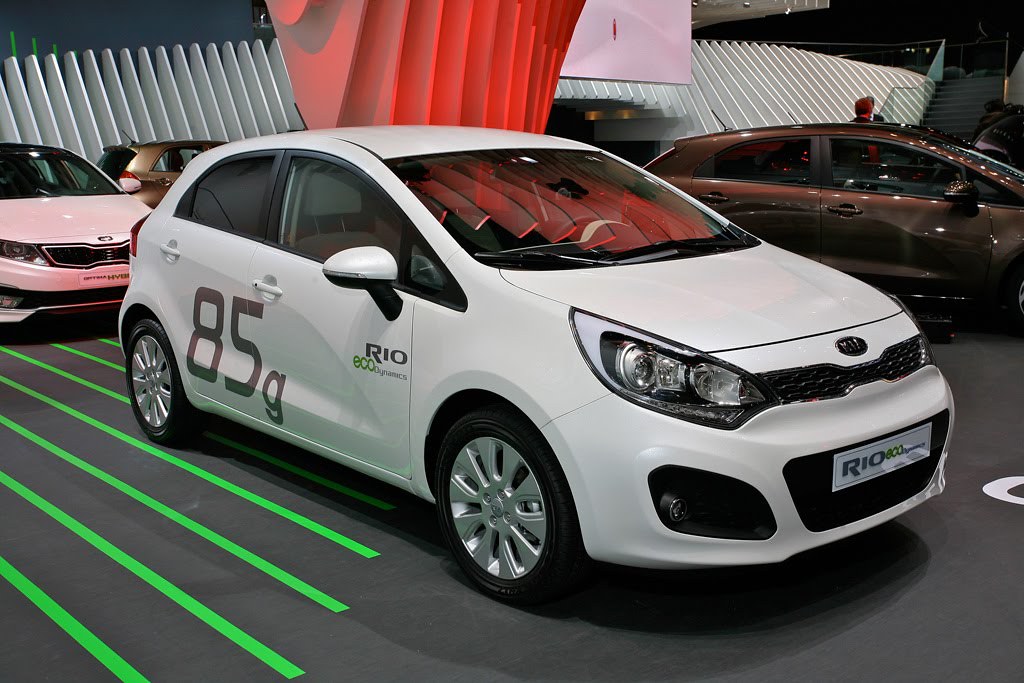
11. **Kia Rio**The Kia Rio, often lauded for its affordability and commendable fuel efficiency, has historically been a popular choice for budget-conscious buyers and those seeking economical urban transport. Its promise of low running costs and a no-frills approach to motoring often seemed like an attractive proposition. However, a significant cohort of owners has found themselves grappling with profound buyer’s remorse, discovering that the Rio’s initial allure gives way to a litany of persistent and frustrating problems.
Central to the dissatisfaction are widespread engine issues that cast a long shadow over the Rio’s reputation for efficiency. Owners frequently report instances of rough idling and persistent misfires, often traceable to problems with critical components such as spark plugs or ignition coils. These engine irregularities not only lead to an unpleasant driving experience but can also signal deeper mechanical concerns, necessitating frequent and often costly trips to the repair shop.
Beyond the mechanical headaches, the Kia Rio also drew criticism for its interior quality and comfort levels. Owners often complained about the cheap interior materials, which not only felt subpar but also contributed to premature wear and a general lack of refinement. Coupled with comfort issues, particularly on longer journeys, these factors collectively eroded the daily enjoyment of the vehicle, making the Rio’s affordability a false economy for many who sought a truly reliable and comfortable ride.
Car Model Information: 2019 Kia Rio S
Name: Kia Rio
Caption: Fourth generation Kia Rio
Manufacturer: Kia
Aka: Kia Pride (2005–2017),Kia K2 (China; 2011–2020)
Production: November 1999 – December 2023
ModelYears: 2001–2023 (North America)
BodyStyle: hatchback
Class: Subcompact car
Layout: Front-engine, front-wheel-drive layout
Predecessor: Kia Pride,Kia Avella
Successor: Kia K3 (BL7),Kia Soluto
Categories: 2000s cars, 2010s cars, Articles containing Korean-language text, Articles with short description, CS1 Croatian-language sources (hr)
Summary: The Kia Rio is a subcompact car manufactured by Kia from 1999 to 2023. Body styles have included a three and five-door hatchback and four-door sedan, equipped with inline-four gasoline and diesel engines, and front-wheel drive. The Rio replaced the first generation Pride—a rebadged version of the Ford Festiva—and the Avella, a subcompact sold as a Ford in some markets. A second generation was introduced in 2005 in Europe and in 2006 in North America, sharing its platform with the Hyundai Accent, a subcompact manufactured by its sister Hyundai Motor Company in South Korea. In August 2023, the K3 was introduced as its successor in several markets such as Mexico and the GCC countries.
Get more information about: Kia Rio
Buying a high-performing used car >>>
Brand: Kia Model: Rio
Price: $10,900 Mileage: 70,595 mi.
Read more about: Hyundai-Kia Crisis: Towing Hitch Fire Risk Threatens Telluride and Palisade SUVs
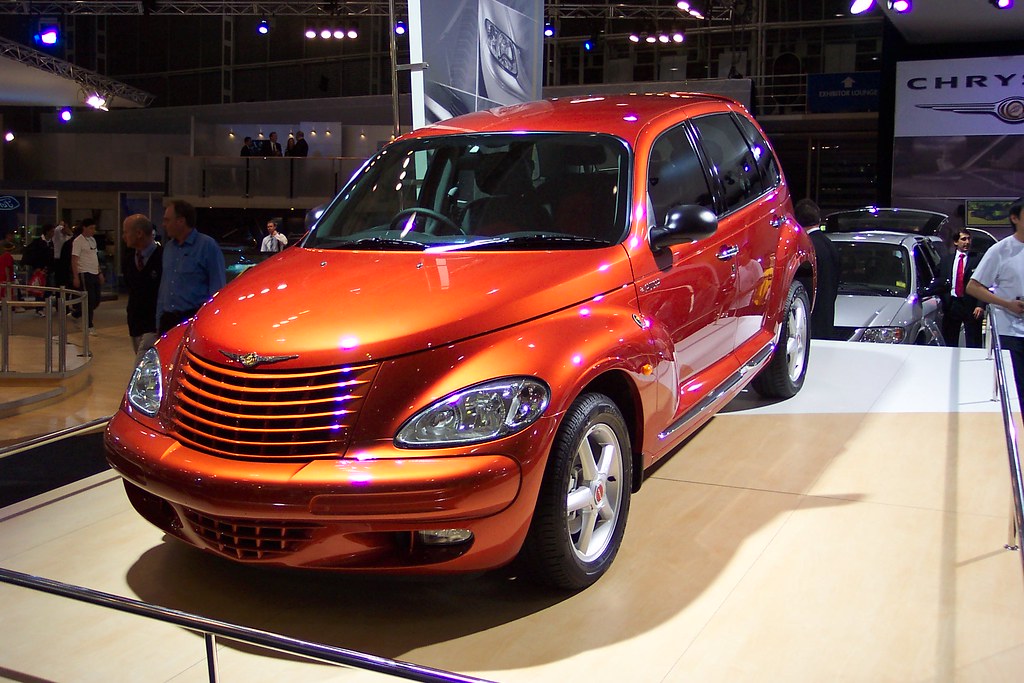
12. **Chrysler PT Cruiser**The Chrysler PT Cruiser emerged on the automotive scene with a highly distinctive retro style, a design choice that proved to be incredibly polarizing – you either loved it or loved to hate it. While its unique aesthetic certainly made it stand out, for many owners, the looks weren’t the only contentious aspect of the vehicle. Beneath its eye-catching exterior, the PT Cruiser harbored a multitude of mechanical and electrical problems that transformed initial curiosity into deep, lasting regret.
The engine of the PT Cruiser was a notorious source of frustration, plagued by issues that included frequent stalling, persistently rough idling, and concerning instances of overheating. More alarmingly, a common and expensive problem was head gasket failure, a repair that often outweighed the vehicle’s market value. These pervasive engine woes meant that reliability was a constant gamble, turning routine commutes into potential roadside emergencies and leading to substantial repair bills.
Adding to the engine’s list of grievances, the PT Cruiser also suffered from widespread transmission and electrical problems. Transmission issues could range from unpredictable shifting to complete failure, while electrical glitches affected everything from dashboard instruments to power windows and locks, creating a cascade of unpredictable malfunctions. This combination of critical powertrain and systemic electrical defects severely undermined the vehicle’s dependability.
The cumulative effect of these extensive and recurring problems meant that the Chrysler PT Cruiser, despite its memorable styling, became a symbol of a regrettable buying decision for a significant portion of its owners. The constant need for repairs, coupled with the sheer inconvenience of dealing with a chronically unreliable vehicle, ensured that many drivers wished they could rewind time and simply avoid this particular retro compact car altogether.
Car Model Information: 2020 Lexus RX 350 Base
Name: Chrysler PT Cruiser
Manufacturer: Chrysler
ModelCode: PT,PG
Production: 2000–2010
ModelYears: 2001–2010
Assembly: Toluca, Mexico State
Designer: Bryan Nesbitt
Class: Compact car
BodyStyle: convertible
Platform: Chrysler PT platform
Related: Dodge SRT4,Dodge Neon
Predecessor: Dodge Neon
Successor: Lancia Delta#Third generation
Layout: Front-engine, front-wheel-drive layout
Engine: ubl
Transmission: Ultradrive#40TE
Wheelbase: 103 in
Abbr: on
Length: 168.8 in
Width: 67.1 in
Height: 63 in
Weight: 3123 lb
Categories: 2010s cars, All articles with unsourced statements, Articles with short description, Articles with unsourced statements from March 2018, Cars discontinued in 2010
Summary: The Chrysler PT Cruiser is a compact car that was built by the American company Chrysler from 2001 until 2010. Introduced as a five-door hatchback wagon, a two-door convertible variant was also made from 2005 until 2008.
Originally planned as a Plymouth model, the PT Cruiser was ultimately marketed as a Chrysler when Plymouth was discontinued. Intended to invoke 1930s aesthetics, the exterior of the PT Cruiser was designed by Bryan Nesbitt. The model received an intermediate facelift for the 2006 model year. Interior packaging was noted for its high roof, high h-point seating, and flexible cargo and passenger configurations enabled by a multi-level rear cargo shelf and rear seats a user could fold, tumble, or remove.
The PT Cruiser was produced in Mexico and Austria at the Toluca Car Assembly and Eurostar Automobilwerk factories respectively. By the end of production in July 2010, worldwide production had reached 1.35 million.
In its nameplate, PT stands for “Personal Transport” or “Personal Transportation.” PT was the PT Cruiser’s product code for the Mexican-made units.
Get more information about: Chrysler PT Cruiser
Buying a high-performing used car >>>
Brand: Chrysler Model: PT Cruiser
Price: $30,981 Mileage: 81,179 mi.
Read more about: Bawse-Level Bling: The 10 Most Shocking Custom Paint Jobs in Rick Ross’s Legendary Car Collection
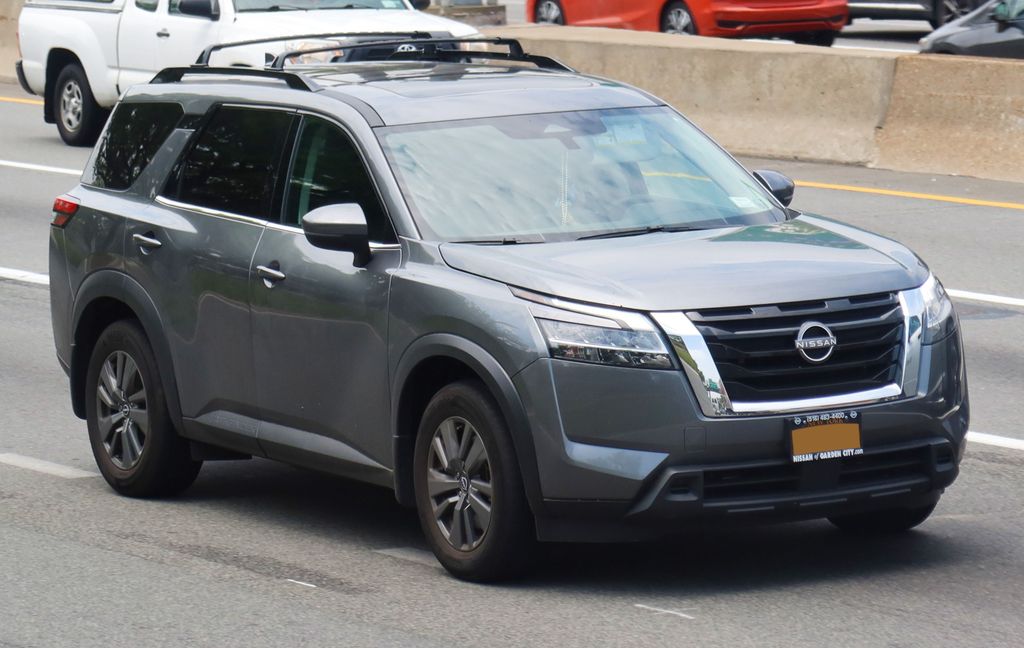
13. **Nissan Pathfinder**The Nissan Pathfinder has enjoyed a long history as a popular SUV, appealing to families and adventurers alike with its promise of rugged capability and spacious interiors. However, even a popular nameplate can fall prey to significant manufacturing missteps, and for many Pathfinder owners, their experiences have been marred by persistent problems that lead to profound regret. The journey with a Pathfinder often became an unexpected detour through the repair shop, rather than the open road.
A primary point of contention for many frustrated owners centers around the continuously variable transmission (CVT), which, similar to other Nissan models of certain vintage, proved to be notoriously unreliable. Drivers frequently encountered a range of disheartening issues, including rough shifting, unsettling shuddering during acceleration, and alarming instances of overheating that could leave them stranded. These transmission flaws were not mere annoyances but critical defects that severely impacted the vehicle’s performance and safety.
The severity of these CVT problems was such that, to the considerable chagrin and financial strain of some Nissan Pathfinder owners, they often faced the daunting prospect of needing to replace the entire transmission, sometimes multiple times. This exceptionally costly repair transformed the perceived value of their SUV into a significant financial liability. Furthermore, various engine issues and persistent fuel system problems compounded the misery, adding to the long list of frustrations that collectively made the Nissan Pathfinder a regrettable purchase for many.
Car Model Information: 2023 Nissan Pathfinder Platinum
Name: Nissan Pathfinder
Caption: 2022 Nissan Pathfinder Platinum 4WD (R53, US)
Manufacturer: Nissan
Production: 1985–present
ModelYears: unbulleted list
Layout: unbulleted list
Class: unbulleted list
Chassis: unbulleted list
Predecessor: unbulleted list
Successor: unbulleted list
Categories: 1990s cars, 2000s cars, 2010s cars, 2020s cars, All-wheel-drive vehicles
Summary: The Nissan Pathfinder is a range of sport utility vehicles manufactured by Nissan since 1985. Until the third-generation model, the Pathfinder is based on Nissan’s compact pickup truck platform which it shares with the Navara/Frontier. The Pathfinder was marketed as the Nissan Terrano outside North America. Beginning in 2004, the vehicles were marketed globally as the Pathfinder. In 2012, the R52 series Pathfinder was released as a three-row crossover SUV based on the unibody Nissan D platform, moving away from the body-on-frame chassis format. The role of a mid-size body-on-frame SUV in Nissan’s global lineup was passed to the Terra/X-Terra, which was released in 2018 and based on the D23 series Navara.
Get more information about: Nissan Pathfinder
Buying a high-performing used car >>>
Brand: Nissan Model: Pathfinder
Price: $36,988 Mileage: 46,270 mi.
Read more about: The 14 Luxury SUVs Hollywood Moms Are Obsessed With for Ultimate Safety (and Why You Should Be Too!)
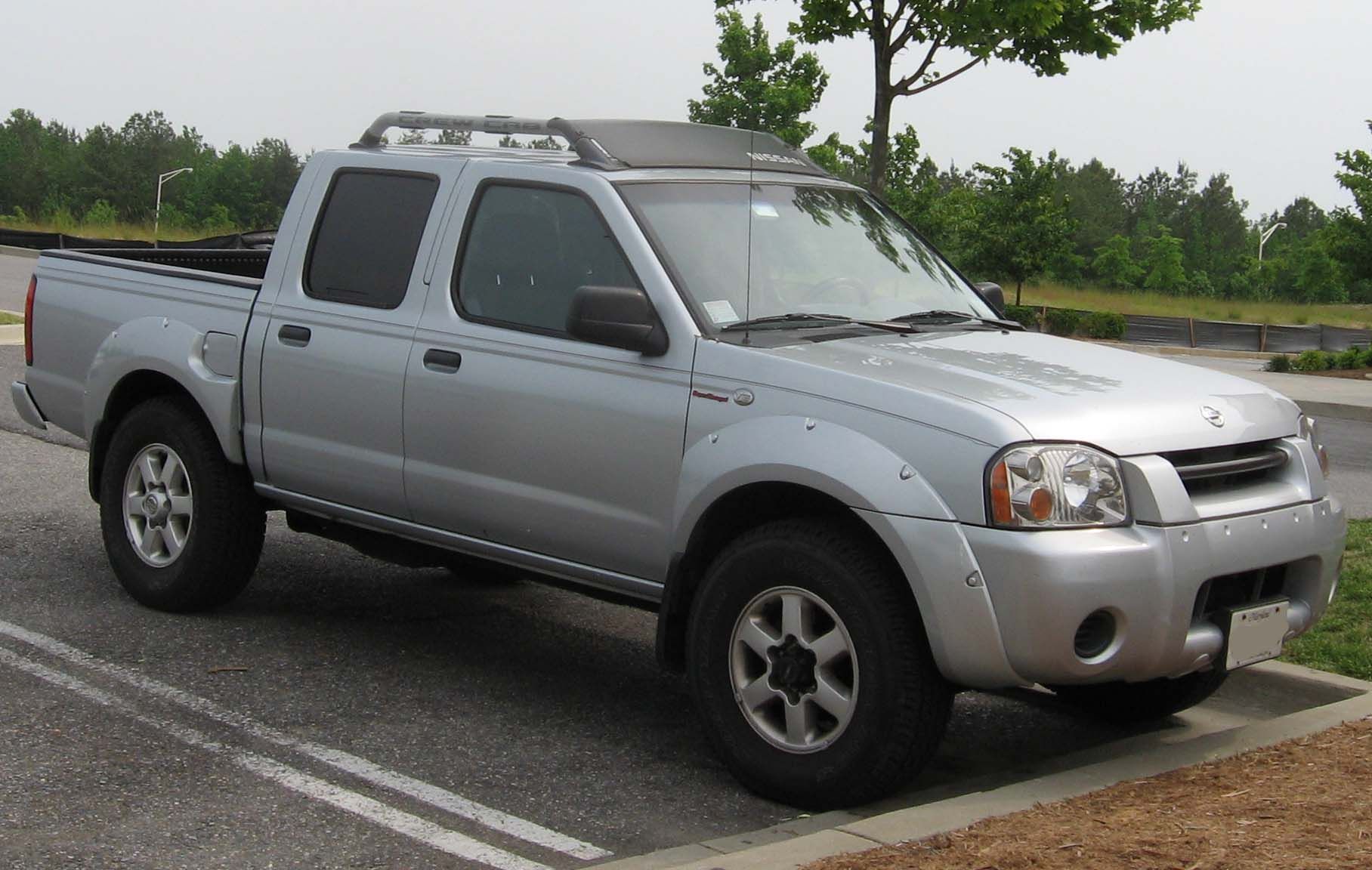
14. **Nissan Frontier**As a mid-size pickup truck, the Nissan Frontier should embody robust dependability and capable utility, qualities essential for truck owners. Yet, for many who invested in this vehicle, particularly certain model years, the ownership experience was anything but reliable, leading to widespread frustration and regret. Instead of serving as a steadfast workhorse, the Frontier often became a source of significant mechanical headaches, leaving owners literally shaking their heads and pounding the dashboard.
The 2005 to 2010 model years of the Nissan Frontier are particularly notorious, largely due to a severe and well-documented transmission issue. This critical flaw stemmed from a design defect where the vehicle’s radiator could leak coolant directly into the transmission fluid. Such contamination created a cascade of catastrophic consequences for the transmission, rendering it highly unreliable and prone to failure well before its expected lifespan.
The direct result of this radiator-coolant leak into the transmission was a litany of operational problems that severely compromised the truck’s performance. Owners frequently reported experiencing slipping gears, disconcerting ‘herky-jerky’ shifting, and ultimately, complete transmission failure. The expense and inconvenience of addressing such a fundamental defect were enormous, representing a major financial blow. Additionally, persistent engine and timing chain issues further compounded the Frontier’s reliability woes, solidifying its place as a pickup many owners wished they had never purchased.
Car Model Information: 2016 Nissan Frontier SV
Categories: All set index articles, Articles with short description, Nissan vehicles, Set index articles on cars, Short description is different from Wikidata
Summary: The Nissan Frontier is a nameplate used on three different pickup truck models by Nissan:
Nissan Frontier (international), an alternative nameplate for the NP300/Navara on some markets
Nissan Frontier (North America), a rebadged NP300/Navara from 1997 to 2021, then became a separate model since 2021
Nissan Frontier Pro, a rebadged Dongfeng Z9 PHEV that will be available from 2025.
Get more information about: Nissan Frontier
Buying a high-performing used car >>>
Brand: Nissan Model: Frontier
Price: $17,000 Mileage: 97,461 mi.
Read more about: Beyond the Red Carpet: Unpacking Celebrity Endorsements in the Automotive Industry and the Brands Forging Their Own Path
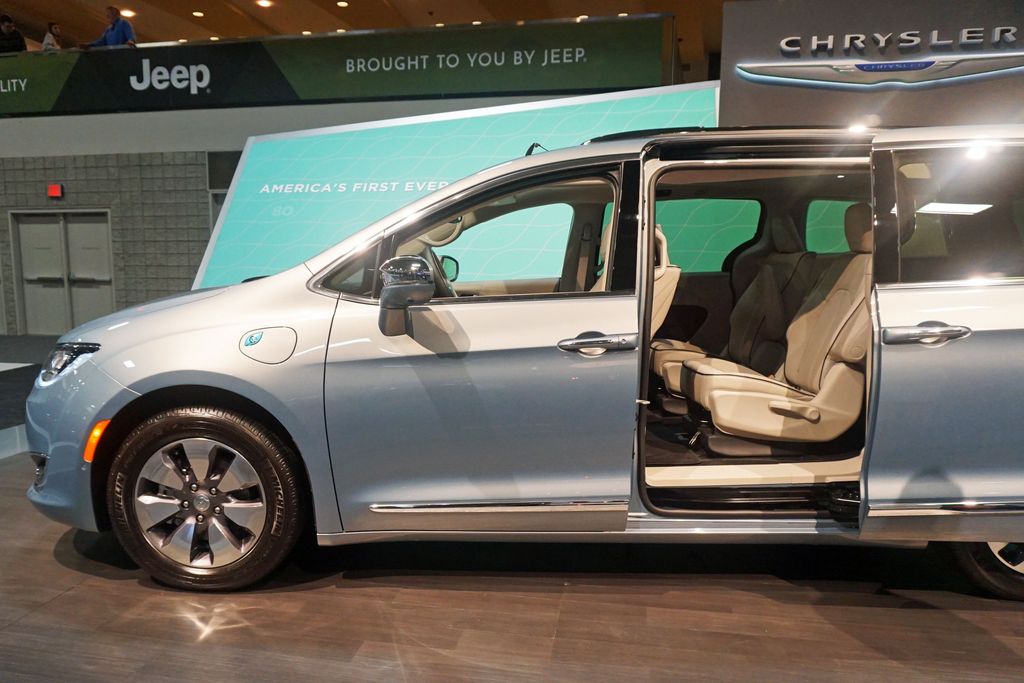
15. **Chrysler Pacifica Hybrid**The Chrysler Pacifica Hybrid stands out in the minivan segment for its innovative plug-in hybrid powertrain, offering a compelling blend of family-friendly utility and impressive fuel efficiency. This promise of reduced trips to the gas pump and a greener footprint is a significant draw for many modern families. However, despite its advanced technology and popularity, a substantial number of owners have found themselves questioning if the hybrid powertrain’s benefits truly offset a slew of persistent battery and electrical problems. According to many owners, the unequivocal answer is ‘No.’
The core of the Pacifica Hybrid’s owner dissatisfaction lies squarely with its complex battery and electrical systems. Issues frequently reported include significant battery drain, leading to unexpected losses of power, and an inconsistent all-electric range that often fell short of advertised figures, undermining the vehicle’s primary efficiency selling point. More critically, some owners faced outright battery failure, an incredibly expensive and logistically challenging repair that could easily negate years of fuel savings.
Beyond these profound battery-related concerns, the Pacifica Hybrid also wrestled with problems related to its electric continuous variable transmission. These issues could manifest as unpredictable power delivery, hesitations, or unusual noises, contributing to a less-than-smooth driving experience and further chipping away at the vehicle’s perceived reliability. The complex interplay of these advanced systems meant that when one component faltered, it often created a domino effect of frustration and costly fixes.
The cumulative effect of these persistent and often high-cost issues means that for many Chrysler Pacifica Hybrid owners, the dream of an efficient, worry-free family hauler quickly turned into a financial and logistical headache. The ongoing saga of battery woes, electrical glitches, and transmission problems transformed what should have been a smart investment into a source of deep regret, proving that even cutting-edge technology can come with unforeseen and significant drawbacks for the unsuspecting owner.
The road of automotive ownership is fraught with choices, and as we’ve seen, not all paths lead to driving bliss. Learning from the experiences of others, particularly when it comes to the significant investment of a vehicle, can be one of the smartest decisions you make. The 15 vehicles we’ve explored stand as cautionary tales, stark reminders that a gleaming exterior or an attractive price tag can often conceal a deeper reality of mechanical frustration and financial drain. By being informed and discerning, you can sidestep these common pitfalls and ensure your next journey behind the wheel is one of genuine satisfaction, not regret.”
Car Model Information: 2021 Chrysler Pacifica Touring-L
Categories: All set index articles, Articles with short description, Chrysler vehicles, Set index articles on cars, Short description is different from Wikidata
Summary: Chrysler Pacifica is a nameplate used by Chrysler for a variety of vehicles.
The name was first used on a luxury minivan concept vehicle in 1999, and later a crossover concept in 2002.
From 2004 to 2008, it was used on a mid-size crossover, and since the 2017 model year, it has been used as the Town & Country minivan’s replacement.
Vehicles using the nameplate are:
Chrysler Pacifica concept (1999), concept minivan
Chrysler Pacifica concept (2002), concept crossover
Chrysler Pacifica (crossover) (2004–2008), production version of the 2002 concept
Chrysler Pacifica (minivan) (2017–present), Chrysler Town & Country replacement
Get more information about: Chrysler Pacifica
Buying a high-performing used car >>>
Brand: Chrysler Model: Pacifica
Price: $28,550 Mileage: 32,188 mi.
Read more about: Accident-Proof Rides: Unveiling 14 Cars Secretly Engineered to Transform Even the Most Terrible Drivers into Confident Road Warriors
, “_words_section2”: “2000

